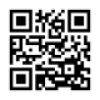Tel:+86 135 6203 9168
E-mail:zivibearing@foxmail.com
WhatsApp: +86 13562039168
Add: Yandian Industry Park,
Liaocheng City, Shandong
Http://www.zivibearing.com

|
Factors to consider when selecting a bearing typeBearing load The size, direction and nature of the load on the bearing are the main basis for selecting the type of bearing. When selecting the type of bearing according to the size of the load, because the main components in the roller bearing are in line contact, it is suitable for bearing a large load and the deformation after bearing is small. The ball bearing is point contact, suitable for light or medium load, so when the load is small, the ball bearing should be preferred. When choosing bearing type according to the direction of load, thrust bearing is generally chosen for pure axial load. Small pure axial load can choose thrust ball bearing; Thrust roller bearings can be used for larger pure axial loads. For pure radial load, deep groove ball bearings, cylindrical roller bearings or needle roller bearings are generally used. When the bearing bears the radial load R at the same time, there is A small axial load A, deep groove ball bearings or angular contact ball bearings with small contact Angle or tapered roller bearings can be selected; When the axial load is large, angular contact ball bearings or tapered roller bearings with larger contact Angle can be selected, or the structure of centripetal bearings and thrust bearings combined together can be selected to bear the radial load and axial load respectively. Speed of bearing Under the general speed, the speed of the high and low on the type of choice does not have any effect, only in the high speed, will have a more significant impact. The bearing samples include the limit speed of bearings of various types and sizes. This limit speed refers to the maximum allowable speed when the load is not too large (P≤0.1C, C is the basic rated dynamic load), the cooling condition is normal, and the bearing is class 0 tolerance. Self-aligning performance of bearings When the center line of the shaft and the center line of the bearing seat do not coincide and there is an Angle error, or bending or tilting due to the force of the shaft, it will cause the axis of the inner and outer rings of the bearing to tilt. At this time, self-aligning ball bearings or self-aligning roller bearings with certain self-aligning performance should be used. This kind of bearing can still work normally when there is a small relative deviation between the inner and outer ring axes. Cylindrical roller bearings and needle roller bearings are more sensitive to the deflection of bearings, and the bearing capacity of this kind of bearings may be lower than that of ball bearings in the deflection state. Therefore, when the stiffness of the shaft and the supporting stiffness of the bearing seat hole are low, the use of such bearings should be avoided as far as possible. Installation and disassembly of bearings It is easy to assemble and disassemble, and it is also a factor that should be considered when choosing bearing types. When the bearing seat has no split surface and the bearing components must be installed and disassembled along the axial direction, the bearing with separable inner and outer rings shall be preferred. When the bearing is installed on the long shaft, in order to facilitate disassembly, the bearing with the inner ring hole of 1:12 conical hole can be selected. |
Yandian Industry Park, Liaocheng City,
Shandong
zivibearing@foxmail.com
+86 135 6203 9168

Mobile station